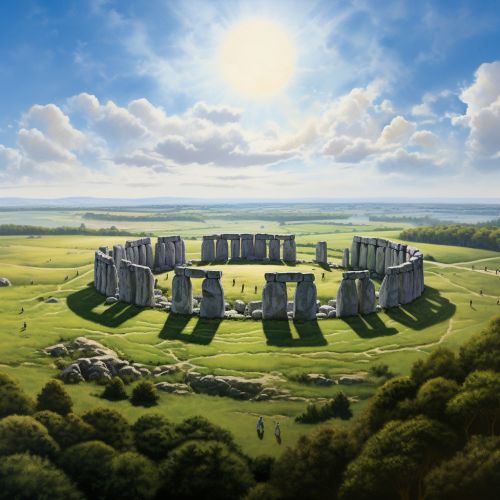Stonehenge
Introduction
Stonehenge is a prehistoric monument located in Wiltshire, England. It is one of the most famous landmarks in the UK, and is regarded as a British cultural icon. It has been a legally protected Scheduled Ancient Monument since 1882. Stonehenge is owned by the Crown and managed by English Heritage; the surrounding land is owned by the National Trust.


History
Stonehenge's construction has been dated to between 3000 and 2000 BC. Archaeologists believe it was constructed in several stages, with the first major construction occurring around 3000 BC. The surrounding circular earth bank and ditch, which constitute the earliest phase of the monument, have been dated to about 3100 BC.
Architecture
The monument consists of a ring of standing stones, each around 13 feet (4.0 m) high, seven feet (2.1 m) wide, and weighing around 25 tons. The stones are set within earthworks in the middle of the most dense complex of Neolithic and Bronze Age monuments in England, including several hundred burial mounds.
Purpose and Use
Archaeologists believe that Stonehenge was used as a religious site by early Britons. Other theories suggest that the site was used for astronomical observations, as certain stones align with specific solar and lunar events.
Archaeological Research
Stonehenge has been the subject of many theories about its origin, ranging from the academic worlds of archaeology to explanations from mythology and the paranormal. Many early historians were influenced by supernatural folktales in their explanations.
Preservation and Public Access
In the early 20th century, a number of restorations took place, and access to the stones was improved. In the late 20th and early 21st centuries, archaeologists conducted excavations and further restorations were carried out. The site is now protected under the Ancient Monuments and Archaeological Areas Act 1979.
